The ruins of St. John's Church
The remains of the Norman choir and medieval chapels which once formed St. John's church stand, a romantic, roofless ruin, standing to the east of the present building, next to the Roman amphitheatre in Chester. The three east end chapels were left in ruin at the time of the Dissolution of the Monasteries.
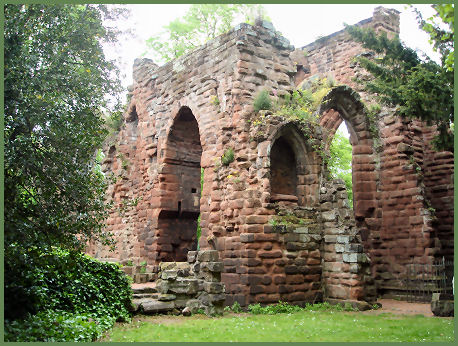
The building has a long and fascinating history. The first church on this site was founded as the great Saxon Minster of Mercia by the Anglo-Saxon King, Ethelred of Mercia, in 689, outside the ancient city walls. Legend relates how Ethelred had a dream, in which he was instructed by God to build a church "at the place where he sees a white hind". Ethelred, Earl of Mercia the husband husband of Ethelflaeda, daughter of Alfred the Great- rebuilt and enlarged the church in the early tenth century, as part of their restoration of the Roman fortress. It is to St John's church that King Edgar was rowed up the River Dee by sub- kings for consecration after his coronation in Bath. 40 Coins dating from the reign of the Saxon king Edward the Elder, son of Alfred the Great, have been found deep beneath the ruins. Earl Leofric of Mercia was said to be a "great benefactor" of the church in the eleventh century.
Saxon Crosses now displayed in the Nave of St. John's
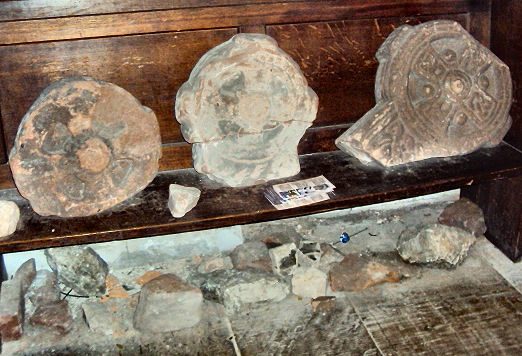
Some fine examples of Viking/Anglo-Saxon cross heads are displayed in the nave of the St. John's Church. Dating from around the tenth century, they are reputedly from the workshop established in the quarry of St Johns by Irish-Norse traders who settled in Chester during the tenth century. Similar crosses thought to have been from the same workshop have been found over a wide area. The cross heads were unearthed from the ruins of St. Johns during the 1870 restoration.
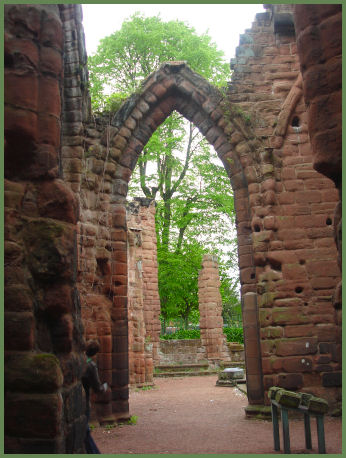
Soon after the conquest, the original Saxon church was later greatly extended by the Normans, in 1075 Peter de Leia , Bishop of Lichfield moved his see here after it was decreed that all bishoprics should be associated with major cities and commenced building on a new church on the ancient site of the Saxon church, the stone was dug from a quarry between the church and the River Dee. The building took the form of large cruciform cathedral cathedral with Nave, Chancel, Choir and Transepts.and building continued until the late thirteenth century. In the medieval period the church was a magnificent building, this original building covered twice the area of the structure which survives to the present day. The ruins visible today are the remains of the Norman choir and medieval chapels which once formed the east end of St Johnís Church.
During the Parliamentary siege of Chester which took place during the Civil War the church was used by the Roundhead forces, who fixed a cannon onto the top of the tower. This was used to bombard the town and breach the city walls at the present Roman gardens. (Repairs to the damage can still be seen in the wall by the garden). During excavations at the Roman Amphitheatre site musket balls dating from this period were found in front of the church.
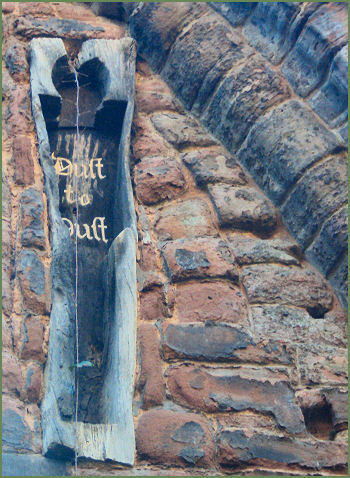
In the eighteenth century, a large house known as Priory House was constructed over part of the site, which was occupied by Mrs de Quincey, mother of the author Thomas de Quincey. The house was demolished in 1871. Until the late nineteenth century the ruins were enclosed by a high wall. Excavations in 1871 which removed mounds of accumulated soil and rubble, revealed many fine stone bosses on the site, which are now displayed in the ruins. The coffin displayed high on the walls, inscribed 'Dust to Dust', was placed there to fill a gap in the unstable masonry. But it is a genuine solid oak coffin from the fourteenth century.
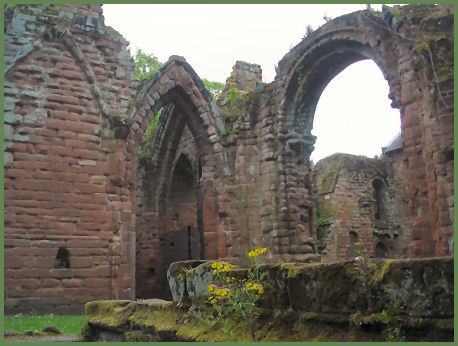
The chapels at St. John were chantry chapels, where prayers were regularly said for the souls of the dead. One of these was built in memory of Sir Peter Roter, Lord of Thornton, who funded repairs to the church in 1349 and had a stone vaulted roof. This area around St. John's is said to be haunted by a monk. He is said to appear in a cowl and speaks to people in Anglo-Saxon.
